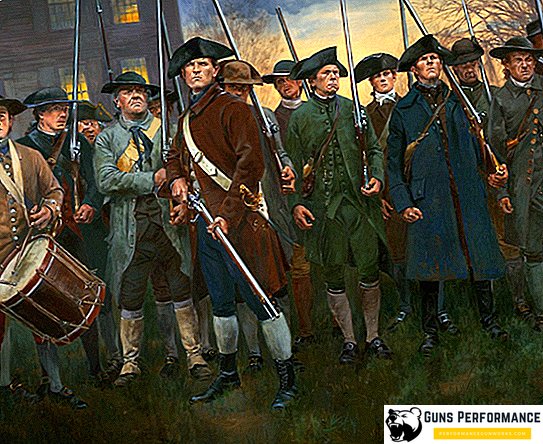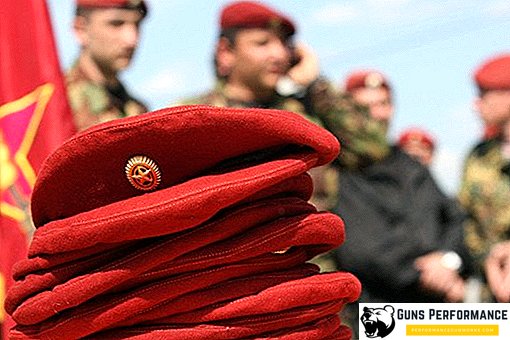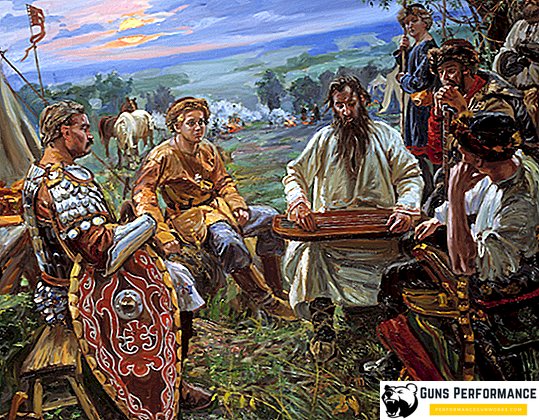A raincoat-tent is a special camping equipment made of thick fabric. Its main feature is the multifunctionality, allowing use in all types of hikes. Inventory is suitable for use as an upper protective clothing, as well as for the construction with it of various types of shelters. The use of thick tarpaulin allows the product not to be afraid of scratches and hot coals from the fire, which often spoil expensive multi-seat tents for tourists.
The history of the creation of the first models

Specialized clothing, vaguely reminiscent of modern cape, appeared in the Russian army in the time of Peter I. These were epanches used to protect soldiers from rain and wind. In 1761 they received hood-shaped collars. Starting from the second half of the 19th century, such things, combining the advantages of several items, became part of military gear in many European countries. The Russian Empire included the cape in the outfits of its officers only in 1894, these models were waterproof.
In Soviet times, the European and tsarist experience was adopted only in 1936, securing tents as standard equipment for the rank-and-file and commanding staff of the Workers 'and Peasants' Red Army. The standard set of protective raincoat included:
- Cloth size 180 × 180 cm;
- The rack is folding, consisting of two cores on 65 cm;
- Lacing rope;
- Two pranks.
During World War II, fighters immediately appreciated the best sides of compact tents, applying them for all sorts of needs:
- Weatherproof;
- Use as camouflage ammunition;
- Carrying wounded soldiers.
In the guards such equipment was used as ordinary capes, and in the open, soldiers often built large shelters, connecting several panels together. The entrances to the dugouts, too, often camouflaged cloak-tents. Since 1942, the defense industry of the Soviet Union began to produce camouflage models with improved camouflage properties.
Description of the classic cape

The standard Soviet raincoat is a tarpaulin product with eyelets at the corners intended for stretching, securing and installing the cloth on stakes. There are loops on two sides of the tarpaulin, and buttons on two opposite sides. These accessories are needed to connect several panels into one large one, which is done as soon as possible. With enough material, you can do it yourself to build a shelter for a whole company of soldiers. During World War II, Soviet and German soldiers did this. By the way, German models were more convenient due to its triangular shape.
In the raincoat there are sewn ropes, with their help, a hood was quickly constructed or the necessary thing was attached near the neck. In order for the long corner of the tent, worn as outer clothing, not to be dragged along the ground, it is fastened higher with a special button.
Currently, in tourist shops you can find a variety of modern models, many of them have a comfortable zipper, but none of them compare in their reliability with the soldier's cloak.
Making your own hands

Some tourists and travelers are trying to make a cape with their own hands, which is quite simple to do:
- Take a piece of thick tarpaulin;
- It is cut to the size of 180 by 180 cm or any desired one;
- Fabric can be treated with special water-repellent materials;
- For the hood, special lacing ropes with a diameter of not more than 5 mm with a winding at the ends are used;
- Racks are made of wood or steel wire with a diameter of 4 mm.
Although it is possible to make such a cape for several evenings, it will turn out not to be very neat, and you will have to spend a lot of time searching for the right materials, so it’s easier to buy a finished product.
The factory cape will weigh only 1.5 kg, and its price varies around 400-600 rubles. It folds and hides easily in a backpack. Some craftsmen make enlarged versions of the product, claiming that with their help several people can be sheltered from the weather, but it is easier to put together several standard soldiers' tents together, because they are just designed for this.
How can you make a full weather cover out of a raincoat?

A cape-tent is installed in various ways, it depends on how many people are trying to hide under it, and how many products they have. The easiest way is to build a shelter for weather protection for one person:
- At first install a rack, in this option of installation it rests against an average loop of a board of tarpaulin;
- Pulling from the stand is done with a rope, pulled through the loop fasteners;
- The corners of the raincoat are fixed on the ground with your pins. If they are not at hand, then you can use heavy stones as angle holders.
One of the main disadvantages of the asylum for one person will be the inability to close on all sides, so you need to focus on the direction of the wind.
For two people the tent is constructed as follows:
- Two cloaks are interconnected; two slopes of the roof are obtained;
- The open ends are attached with half posts and two ropes;
- The free corners of each of the panels are fixed on the ground.
If there is a need to make shelter for three, then the third cape is fixed as a side face. In the version for four people, all the ends are closed with panels, butt seams are laced up.
In the history of Russian troops, it often happened that soldiers built shelters on five; in this variant, a slightly different technology was used:
- Each side slope is made of interconnected panels;
- The fifth panel goes to the butt;
- One side does not close;
- The construction is mounted with 3 semi-racks.
When installing shelters from the raincoat, it is strongly recommended to use a dug turf, it is advisable to lay it all the way around the perimeter of the canvas below. This will provide a tighter fit and help the structure to withstand the sudden gusts of wind.
German Bundesver Cloak Zeltbahn 31

The product of the German production of the sample in 1931, which was in service with the Wehrmacht and made of waterproof cotton gabardine, is characterized by a triangular shape. It replaced the earlier quadrilateral models of equipment. New products had camouflage colors of different shades: one side of the cloth was darker and the other was lighter.
German cloak-tents could also be put together in cloths and made of them large shelters for soldiers. Now such models are found among collectors, reed-green and light bronze raincoats made for troops stationed in North Africa are considered to be of special value. German models differed from Soviet models not only in their form:
- The size of the cloth - 203 by 250 cm;
- On each of the short sides were 12 buttons with loops;
- The bottom side had 6 small rings and the same button loops.
During the Second World War, the Germans often constructed large shelters for 16 people from individual places. For this there were special bags with a set of accessories.
Versions of using universal army equipment

Dense and light tent fabric allows using this invention for various needs:
- Blackouts. The structure of the material does not let the sun's rays, from which you can hide in summer. At night, under a tarpaulin, the light of a flashlight or the light of a match and a cigarette are not visible; In living conditions, door and window openings are closed with canvas;
- Carrying. It is not necessary to explain that on the march a misfortune can happen to any person, and comrades will have to promptly take the victim to a hospital or a first-aid post. The dimensions and density of the material can easily withstand the weight of the average person, in extreme cases, the cloth is used as a drag;
- Bedspread or bedding. The level of thermal insulation makes it possible to use a cape in this capacity. Many fall on one part, and cover the second;
- Awning. If there is no desire to make a full-fledged shelter, then the cloth is stretched between two trees and secured with the grommets;
- Weatherproof cape. In the army, these products are most often used that way. It is enough to pull out one lace, and the second to tie in the neck. For the manufacture of the hood you need to pull both laces.
The usual raincoat tent is not waterproof and can withstand only a little rain - this is one of its main drawbacks. To protect against showers, the officer’s version is used, having a rubberized fabric with a high level of waterproofing, but it is not multifunctional.
Despite the diversity of choice in the modern world of tourist equipment, soldiers' raincoats are still very popular among fishermen, hunters and tourists. The combination of low prices and low weight make it a leader in the budget segment.












